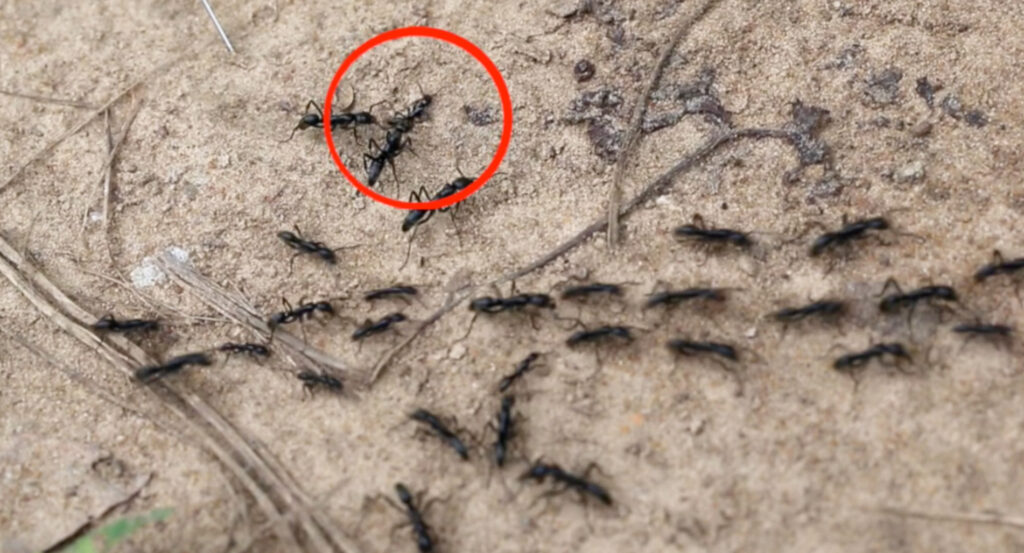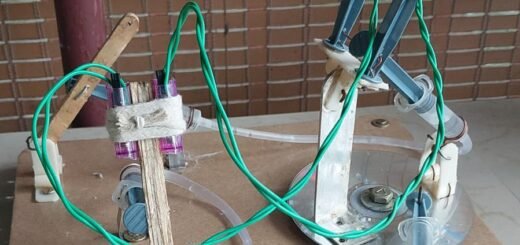Exploring the Enigmatic Ant 🐜Undertakers: Theories Behind Their Mysterious Burial Grounds

In the intricate world of ants, a secret unfolds beneath our feet—a mesmerizing display of social behavior surrounding their fallen comrades. 🐜💀 While the actions of these tiny creatures may seem insignificant to the human eye, ants possess a remarkable and perplexing habit of carrying away their deceased companions. But where do these industrious undertakers transport the lifeless bodies? 🤔 Let’s delve into the captivating theories that shed light on this peculiar phenomenon, unravelling the mysteries of the ant burial grounds. 🐜🌿
- One widely embraced theory is necrophoresis, a process where ants diligently remove the corpses from their bustling colonies to prevent the spread of diseases and pathogens. With an unwavering commitment to cleanliness, these diligent caretakers pick up their fallen comrades and transport them to designated areas far from the central nest, forming what appears to be miniature ant cemeteries or graveyards. 🚫🦠💀

- However, there’s more to the story! Some scientists propose an intriguing waste disposal theory. In this scenario, ants carry away the dead as part of their general waste management mechanisms. Just like other waste materials, the ants diligently transport the lifeless bodies to specific regions within the colony, ensuring the nest remains pristine and hygienic. 🗑️🌱
- But what drives these tiny gravediggers? Chemical signaling may hold the key. Ants communicate through a sophisticated system of chemical messages known as pheromones. It’s possible that dead ants emit distinct chemical signals associated with decomposition or death, triggering alarm or repulsion responses in their living counterparts. Sensing these signals, the ants promptly pick up the fallen ants and relocate them away from the nest, maintaining the colony’s unique scent and chemical harmony. 🧪🚨👃
- Could behavioral isolation be another factor at play? For social insects like ants, maintaining order and harmony within the colony is vital. By isolating the dead, ants prevent potential disruptions caused by decomposition odors or the presence of deceased ants in critical areas such as food storage chambers or nurseries. Their meticulous removal of the fallen comrades ensures the smooth functioning of the tightly knit ant society. 🚷🚫🏰

- Interestingly, some ant species take the circle of life to a whole new level. For them, dead ants become a valuable resource for nutrient recycling. Rather than discarding the fallen, these ants carry them to specific locations where they are broken down and consumed by other colony members. This macabre but efficient practice contributes to the nutrient cycling within the ecosystem and showcases the resourcefulness of these tiny architects of nature. ♻️🌍🍃
In conclusion, the world of ants holds many marvels, and the mystery surrounding their handling of the deceased continues to captivate scientists and nature enthusiasts alike. The theories of necrophoresis, waste disposal, chemical signaling, behavioral isolation, and nutrient recycling offer us glimpses into the complex and ingenious mechanisms that govern these remarkable creatures. As we peer into the miniature burial grounds of ants, let us marvel at the intricate web of life and the unseen wonders happening right beneath our feet. 🐜💫🔍













